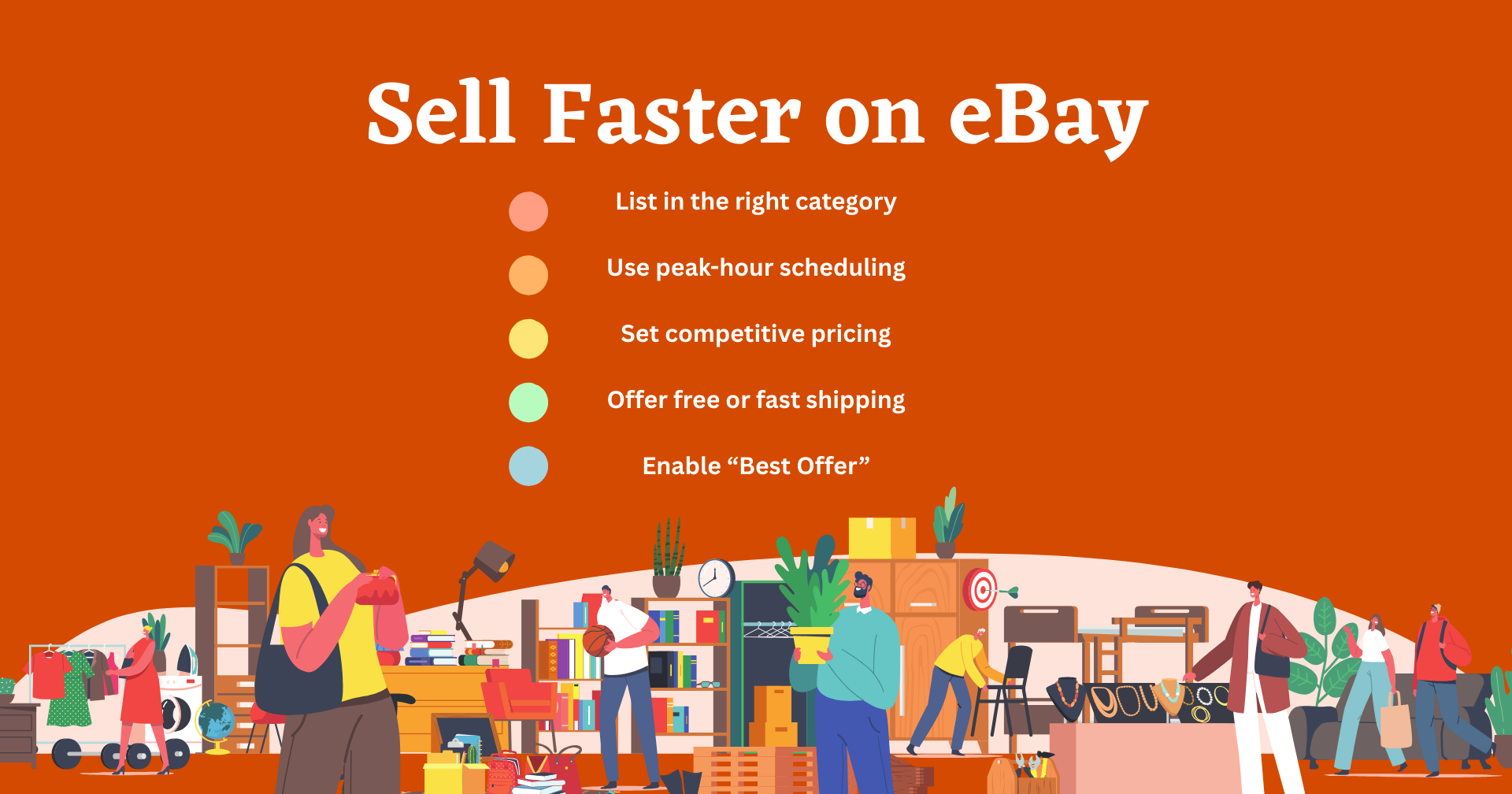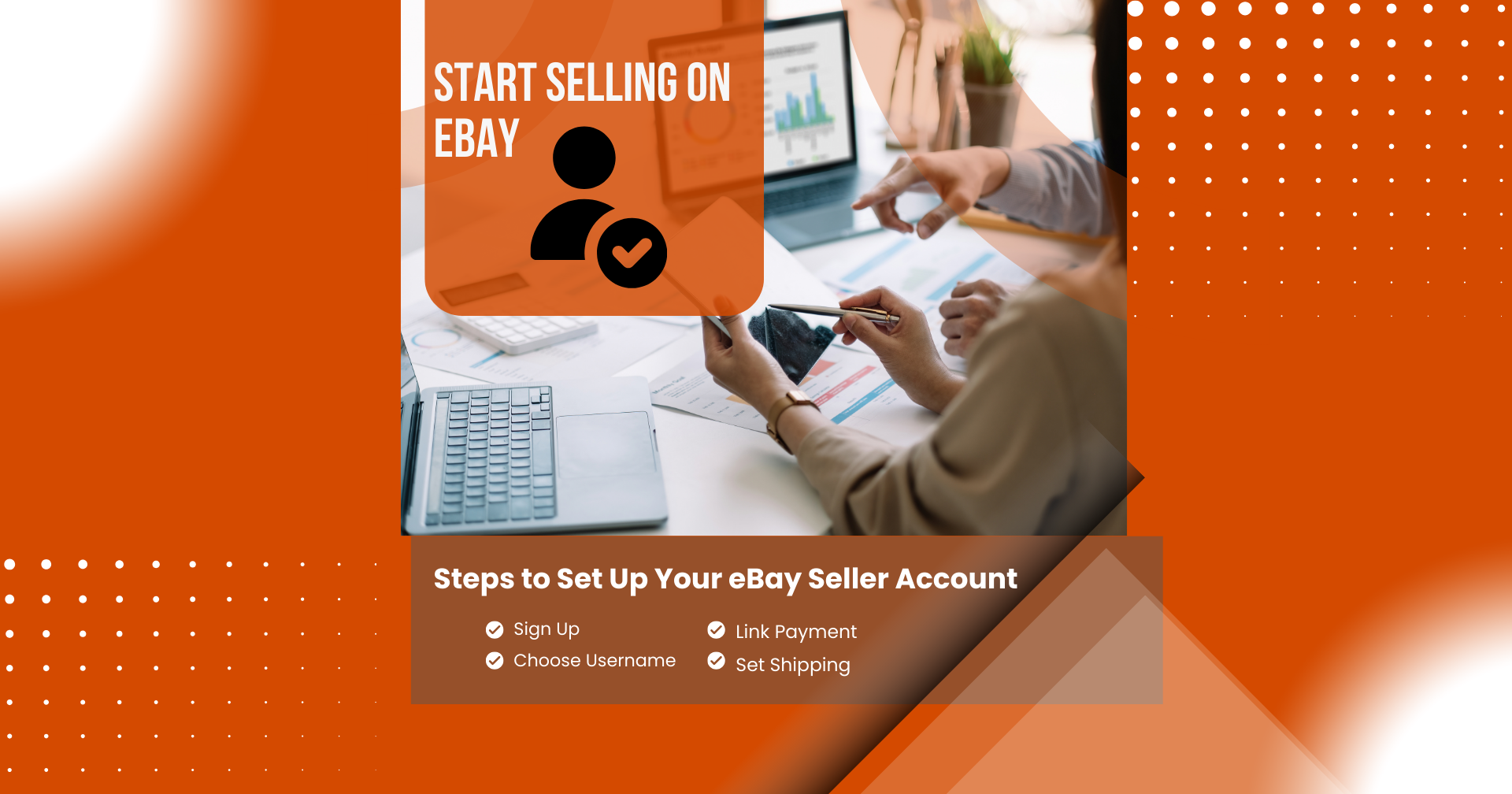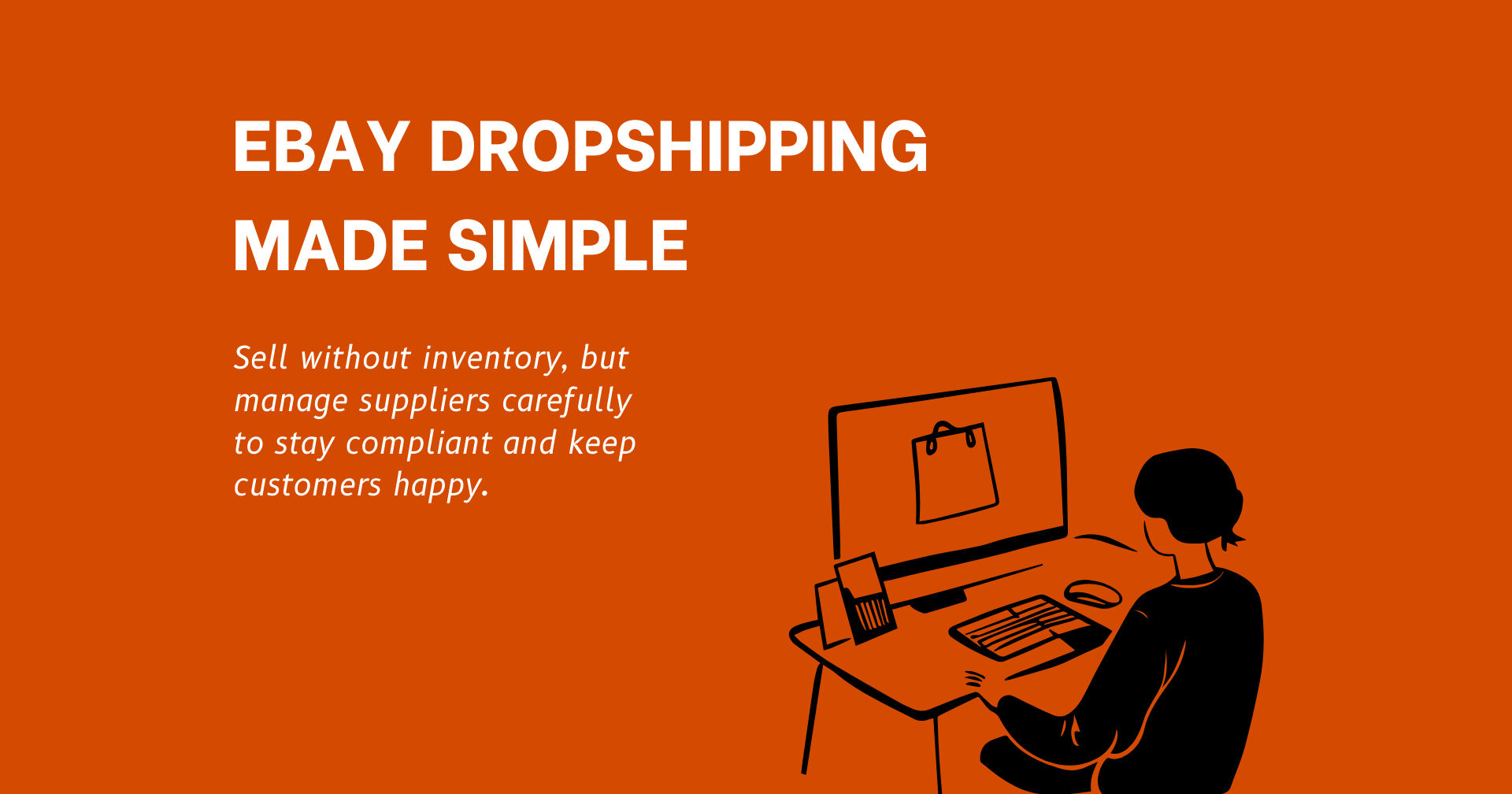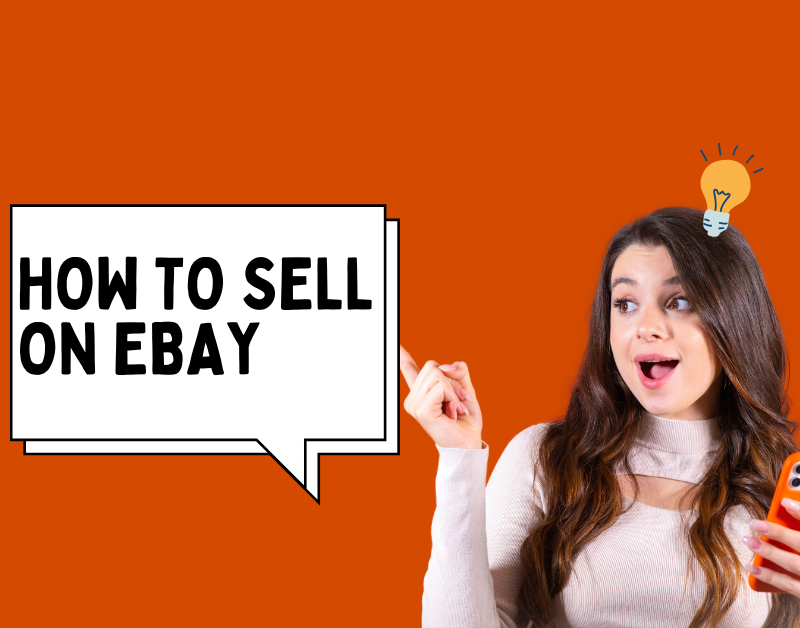Introduction
Learning how to sell on eBay remains one of the most effective ways to start an online business with minimal upfront investment. eBay is a global marketplace connecting millions of buyers and sellers every day, making it a great platform for those wanting to declutter, start a side hustle, or build a full-scale eCommerce business.
Understanding how to sell on eBay successfully means more than just creating listings—you need to optimize your products for visibility, manage pricing strategies, and provide excellent customer service.
To master how to sell on eBay, you also need to understand the platform’s fees, shipping options, and business policies. This guide will walk you through every important step of how to sell on eBay, from setting up your account to maintaining compliance, ensuring you can build a strong reputation and grow your business effectively.
How to Find a Seller on eBay
Understanding how to find a seller on eBay matters because buyers often want to verify a seller’s credibility before making a purchase. When a buyer looks up a seller, they are usually checking feedback ratings, past transactions, and store policies. This means your seller profile is not just a formality—it’s a vital part of building trust. As a seller, your profile should include clear branding, accurate business information, and a professional tone that reassures buyers they’re dealing with a trustworthy seller.
For example, if a buyer has previously purchased from you and wants to buy again, they will search for your username or store name. If your profile is optimized and easy to find, you increase the chances of repeat business. Positive reviews and high ratings will also make it easier for new buyers to trust you immediately. So when learning how to sell on eBay, remember that visibility and credibility go hand in hand.
How Do I Look for a Seller on eBay
The question of how to look for a seller on eBay is commonly asked by buyers who want to ensure they are dealing with someone reliable. They typically use the advanced search feature or click on the seller’s name within a product listing. This is why your presence as a seller should be strong and consistent.
Your username should be professional and related to your niche if possible, and your seller store page should communicate what you offer. High-resolution logos, a compelling store description, and a clear return policy all contribute to building confidence in potential buyers. When you prioritize these elements, you make it easier for customers to search for you by name and come back for future purchases.
How to Sell Things on eBay
If you’re wondering how to sell things on eBay, the process starts with creating your account and deciding what products you want to list. Understanding how to sell on eBay effectively involves several important steps:
eBay accommodates everything from new products and branded items to second-hand goods and collectibles.
For beginners, selling things from around your home is a great way to learn how to sell on eBay without heavy upfront investment.
If you plan to run a business, product research becomes critical to success in learning how to sell on eBay. Identify products that are in demand and have reasonable profit margins.
When creating listings, pay close attention to details like titles, descriptions, and images. A title should include relevant keywords and product identifiers such as brand, model, and condition.
The description should answer every possible question a buyer might have, helping you excel at how to sell on eBay.
High-quality images are non-negotiable because they build trust and increase your chances of making a sale.
How to Sell Stuff on eBay
For anyone curious about how to sell stuff on eBay fast, the key lies in strategy. You need to list items in categories where they can gain maximum exposure. For instance, if you are selling electronics, make sure your listings appear in the correct subcategory with all specifications listed. Using eBay’s listing tool, you can also schedule your items to go live during peak hours, increasing visibility when more buyers are active. Competitive pricing is another factor.
Before setting a price, check what similar items are selling for. Offering free shipping or faster delivery options can also make your listings more attractive. Additionally, consider enabling eBay’s “Best Offer” feature, which allows buyers to negotiate, increasing your chances of closing a sale.

How Do I Search for a Seller on eBay
Buyers often ask how to search for a seller on eBay to locate a specific store or check seller performance. To ensure your store stands out and is easy to find, keep these key points in mind when learning how to sell on eBay:
Optimize your store name to be clear, memorable, and relevant to your niche. This helps buyers easily find you when they search for your brand or products.
Design a professional and eye-catching banner that reflects your store’s identity. A strong visual presence increases trust and encourages buyers to explore your listings.
Write a detailed store description that includes keywords related to your niche. Since eBay’s internal search indexes these details, including the right keywords improves your store’s visibility and search rankings.
Maintain transparency by clearly stating your policies, shipping information, and return procedures. A trustworthy store boosts buyer confidence and encourages repeat business.
Regularly update your store’s content and listings to keep it fresh and relevant, which helps in how to sell on eBay by maintaining good search placement.
Encourage buyers to leave positive feedback and reviews, as strong seller ratings contribute to higher conversion rates and better search visibility.
How Much Are the Selling Fees on eBay
One of the biggest concerns for new sellers is how much the selling fees are on eBay. Unlike some platforms with flat rates, eBay’s fees vary based on listing type, category, and optional upgrades. There are two main types of fees: insertion fees (charged when you list an item) and final value fees (a percentage of the total amount the buyer pays, including shipping).
For most categories, the final value fee ranges between 10% and 12%. If you offer advanced listing options like bold titles or subtitle text, additional charges apply. Promoted listings also cost extra but can significantly boost visibility. Understanding these fees is essential because they directly affect your profit margins. Always calculate fees before setting your selling price to avoid underpricing your products.
Best Selling Products on eBay
If you want to succeed, identifying the best-selling products on eBay is crucial. Currently, categories like electronics, fashion, home and garden items, and health products dominate sales. Seasonal items, trending gadgets, and unique collectibles also perform well.
For example, gaming consoles, smartphones, and branded sneakers often appear in the top-selling lists. To stay ahead, monitor eBay’s trending section or use research tools like Terapeak to analyze what buyers are actively searching for. Selling high-demand products increases your chances of making consistent sales and building a strong reputation on the platform.
eBay Selling Tips
Following the right eBay selling tips can make or break your success. Start with optimizing your listings for visibility. Use clear titles that include important keywords, provide detailed descriptions, and upload multiple high-quality images. Offer competitive shipping options and handle returns professionally. Fast response to buyer inquiries and excellent communication also play a role in gaining positive feedback.
Consider using eBay’s promoted listings to boost exposure for your products, especially in competitive categories. Another tip is to regularly review your pricing strategy to stay ahead of competitors without sacrificing profit.
Create eBay Seller Account
Before listing your first item, creating your eBay seller account is essential. Here’s what you need to do to get started with how to sell on eBay:
Sign up using your email address to create your account credentials.
Choose a unique and professional username that represents your store or brand.
Verify your identity by following eBay’s verification steps to ensure account security.
Link a payment method to receive payouts smoothly and securely.
Set up your shipping preferences, including handling times and delivery options.
If you plan to sell in high volume, consider opening a business account instead of a personal account.
Business accounts provide extra features such as custom branding for your store and access to detailed reporting tools, which help optimize how to sell on eBay effectively.

eBay Business Policies
Complying with eBay business policies is a crucial part of learning how to sell on eBay and maintaining a good reputation. These policies cover a wide range of important aspects, including shipping timelines, return policies, payment processing, and prohibited items.
Sellers must ensure they ship items within the handling time specified in their listings to meet buyer expectations and avoid penalties. Failure to adhere to these requirements can lead to account restrictions, negative feedback, or even suspension, which can severely impact your ability to sell effectively on the platform.
When learning how to sell on eBay, it’s important to offer a clear and fair return policy. This not only helps you stay compliant with eBay’s rules but also builds trust with buyers, encouraging more sales. Promptly resolving disputes and responding to buyer concerns professionally are also essential to maintain positive feedback and avoid issues that could damage your seller rating. Accurate and detailed item descriptions help prevent misunderstandings and returns, making compliance easier and improving the overall customer experience.
By fully understanding and following eBay business policies, sellers can protect their accounts and grow their businesses sustainably. Compliance ensures you operate within eBay’s guidelines while providing a smooth and trustworthy shopping experience for your customers. Mastering these rules is a fundamental part of how to sell on eBay successfully and build a long-term online business.
How Do You Sell Things on eBay
When asking how to sell things on eBay effectively, the answer involves strategy and consistency. Selling successfully is not just about creating a listing—it’s about creating an optimized experience for buyers. Use keywords strategically in your titles, offer competitive pricing, and provide excellent customer support. Keep your store active by adding new products regularly, as this can improve your visibility in eBay’s search results.
How Much Cost to Sell on eBay
Another common question is how much costs to sell on eBay compared to other platforms. While listing a certain number of items is free each month, eBay charges fees for additional listings and takes a commission on the final sale price. Optional features like subtitles, international visibility, and promoted listings add to the cost. It’s important to factor these expenses into your pricing strategy to maintain profitability.
How to Look Up a Seller on eBay
Buyers frequently want to know how to look up a seller on eBay to verify their credibility. As a seller, you can make this process easier by optimizing your store name and maintaining consistent branding across your listings. Respond to messages promptly and resolve disputes professionally to keep your feedback score high, as this makes your store more trustworthy and easier to find.
How to Sell an Item on eBay
The process of how to sell an item on eBay involves creating a detailed and attractive listing. Start by choosing the right category for your product, then write a descriptive title that includes relevant keywords. Provide accurate specifications in the description and upload clear, high-resolution images from multiple angles. Set your pricing strategy based on market research, and choose whether to list as an auction or fixed price.
How to Sell on eBay for Free
If you’re wondering how to sell on eBay for free, you can take advantage of the free listing promotions eBay offers to sellers. Most accounts receive a set number of zero-insertion-fee listings each month. However, you will still pay a final value fee when the item sells. Subscribing to an eBay Store plan can also give you additional free listings, making it cost-effective if you sell in large volumes.
eBay Dropshipping
eBay dropshipping is a business model that allows sellers to list products from suppliers without holding inventory. While it offers low startup costs, it comes with challenges such as supplier reliability and compliance with eBay’s dropshipping policy. Sellers must ensure products ship within the specified timeframe and maintain quality standards. Failure to do so can result in negative feedback and account restrictions.

eBay Customer Support Chat
If you encounter issues as a seller, eBay customer support chat is a valuable resource. This feature allows you to connect with eBay representatives quickly to resolve problems like listing errors, policy questions, or buyer disputes. Knowing how to use eBay’s support options effectively can save time and help you maintain good standing on the platform.
eBay Product Research
Here’s how thorough product research plays a vital role in learning how to sell on eBay successfully, broken down into points with the focus keyword included four times:
Thorough eBay product research is essential for anyone wanting to learn how to sell on eBay effectively and build a profitable store.
Analyze demand trends to identify products that buyers are actively searching for, helping you stock items with strong sales potential.
Evaluate competition levels to understand how saturated the market is and find opportunities to differentiate your listings.
Use powerful tools like Terapeak and eBay’s Seller Hub to gain valuable insights into buyer behavior, popular products, and optimal pricing strategies.
Regular product research ensures you stay competitive and adapt your inventory to meet changing customer needs and market conditions.
Consistently applying eBay product research techniques is a key part of how to sell on eBay profitably and sustain growth over time.
Mastering how to sell on eBay includes making data-driven decisions based on thorough product research to maximize your sales and profits.
Staying updated with product trends through research supports your ongoing success in how to sell on eBay in a dynamic marketplace.
eBay’s Return Policy
Finally, understanding eBay’s return policy is essential for both compliance and customer satisfaction. eBay encourages sellers to offer returns, and many buyers prefer sellers who provide hassle-free return options. Clearly state your return policy in every listing to avoid misunderstandings. Offering free returns can also make your listings more appealing and improve your search ranking within eBay.
Conclusion
Mastering how to sell on eBay requires patience, strategic planning, and careful attention to every aspect of your online store. Understanding the platform and learning how to sell on eBay effectively involves more than just listing products—it demands continuous effort in optimizing your account, researching the right products, and tailoring your listings to attract buyers. By focusing on these areas, you can lay a strong foundation for your eBay business and set yourself apart from the competition.
A crucial part of how to sell on eBay successfully is providing excellent customer service. Responding promptly to inquiries, handling returns professionally, and maintaining positive feedback will boost your reputation and encourage repeat purchases.
Alongside great service, optimizing your listings with clear titles, detailed descriptions, and quality images plays a vital role in driving sales. When you master how to sell on eBay, you not only improve your visibility but also build trust with your customers, which is essential for long-term growth.
By following the guidelines in this comprehensive guide on how to sell on eBay, you can create a strong and reliable presence on the platform. Whether you are a beginner or an experienced seller, implementing these proven strategies will help you attract more buyers and develop a sustainable online business in 2025 and beyond.
Success in how to sell on eBay comes from consistent effort, learning, and adapting to market trends while keeping your customers’ needs at the forefront.


